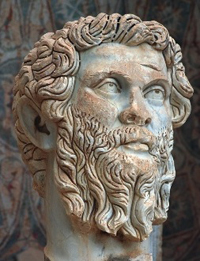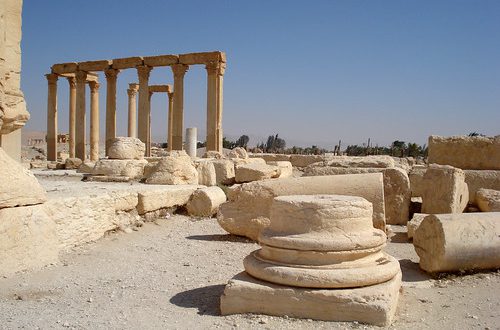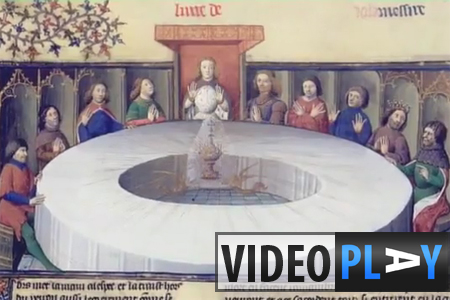 Archaeology and Landscape in the Altai Mountains of Mongolia is an ambitious project designed to provide the first ever in-depth survey of the cultural landscape of one of the most remote regions of the world. The Altai Mountains are on the western edge of Mongolia, wedged along the borders of China and Russia, and home to archaeological marvels such as engraved standing stones and rock art. We spoke to project leader Esther Jacobson-Tepfer, a Professor of Asian Art at the University of Oregon, whose first visit to the Altai (or Altay) Mountains in 1994 became the catalyst for the project, an initiative undertaken with Mongolian and Russian researchers.
Archaeology and Landscape in the Altai Mountains of Mongolia is an ambitious project designed to provide the first ever in-depth survey of the cultural landscape of one of the most remote regions of the world. The Altai Mountains are on the western edge of Mongolia, wedged along the borders of China and Russia, and home to archaeological marvels such as engraved standing stones and rock art. We spoke to project leader Esther Jacobson-Tepfer, a Professor of Asian Art at the University of Oregon, whose first visit to the Altai (or Altay) Mountains in 1994 became the catalyst for the project, an initiative undertaken with Mongolian and Russian researchers.
The region’s human history dates back thousands of years but is little documented until now.
A new book, Archaeology and Landscape in the Mongolian Altai: An Atlas, documents the work undertaken by Dr Jacobson-Tepfer and her team, and is complemented by an extensive website that gives the world a long-awaited insight into this little explored region.
In this interview with Heritage Key, Dr Jacobson-Tepfer explains how the project came about and what she hopes it will achieve.
HK: Most people know very little about Mongolia, and even less about the specifics of the Altai Mountains. Can you explain why the region is so important from an archaeological perspective?
 EJT: Scientists have long recognized that Mongolia (especially the Gobi Region) was a significant cultural hearth in the Paleolithic Period. With its endless steppe, Mongolia was also a major stage for the emergence of North Asian pastoralism in the pre-Bronze Age and its spread in the Bronze Age.
EJT: Scientists have long recognized that Mongolia (especially the Gobi Region) was a significant cultural hearth in the Paleolithic Period. With its endless steppe, Mongolia was also a major stage for the emergence of North Asian pastoralism in the pre-Bronze Age and its spread in the Bronze Age.
More specifically, the Altai Mountains appear to have constituted a singularly generative cultural region through that period and right up through the Turkic Period. This is probably due to several factors. With their distinctive mountain steppe environment, the Altai served as a transition zone between forest steppe (to the north) and desert steppe (to the south), thus providing a rich biosphere for early hunters and pastoralists, both sedentary and mobile.
Secondly, the Altai Mountains can be seen as both dividing Central from North Asia and joining them. In addition, they have traditionally been an important source of metals. For these reasons, undoubtedly, they are unusually rich in the archaeology of the Bronze and Early Iron ages, but also for the archaeology of the iron-working Trks.
HK: Would it be fair to say that until your project, little of archaeological interest was properly documented in the region and, since V.V. Sapozhnikov first explored it in the early 1900s, little has probably changed, either?
EJT: I think that is generally correct. A number of Mongolian and Russian archaeologists undertook surveys during the 20th century, but almost no-one went back to document that material. An exception to this is represented by the survey of Turkic image stones by Bayar and Erdenebaatar that I refer to in the book; their work, however, published in Mongolian, focused primarily on materials within well-known valleys and within the eastern sector of Bayan lgiy. When we first went into the Mongolian Altai, in 1994, I think the region looked pretty much as it was seen by Sapozhnikov except that the glaciers had greatly receded in the preceding 80 years.
HK: We don’t know a great deal about Bronze and Iron Age people of the region probably we know less about these people than their contemporaries anywhere else in the world…
EJT: That is probably correct with regard to the cultures and peoples of the Bronze Age. As far as the Early Iron Age goes, our knowledge is much more extensive. Unfortunately, virtually all of the written documentation of the important Turkic cultures of the Altai and adjoining Sayan regions are in Mongolian or Russian and have not been translated; for that reason, they are more or less out of the reach of interested Westerners.
HK: What were your original goals when you started the project? Did you foresee that it would become such a large-scale project stretching over so many years?
EJT: That is a big question! When we first began to survey the area that became our study region, we were interested only in rock art: in identifying concentrations and in documenting them. One might say that we had no idea of the potential enormity of our project. Only as it became clear that we had identified two of the largest rock art concentrations in North and Central Asia and one of the oldest did we begin to recognize the possible scope of our work. By 1997, I had also become very interested in the other monument types and had begun to document them more deliberatively and in a more organized fashion. It was then that I began to formulate the larger, long-range project with my colleagues, James Meacham and Gary Tepfer.
HK: The Altai project had its origins in Russia following your first visit there in 1989. Can you tell us how this came about and some of the challenges particularly as an American you originally encountered studying the region?
 EJT: As so often happens, I fell into a series of unexpected opportunities. As as scholar of the art of the Early Nomads of the Eurasian Steppe, I had become impatient with the limitations imposed by un-provenanced (for the most part) materials in museums and publications. I wanted to look for materials in the field that would corroborate or clarify my understandings. By good fortune I had been put into contact with a researcher who was interested in collaboration with a foreign scholar in the Russian Altai.
EJT: As so often happens, I fell into a series of unexpected opportunities. As as scholar of the art of the Early Nomads of the Eurasian Steppe, I had become impatient with the limitations imposed by un-provenanced (for the most part) materials in museums and publications. I wanted to look for materials in the field that would corroborate or clarify my understandings. By good fortune I had been put into contact with a researcher who was interested in collaboration with a foreign scholar in the Russian Altai.
When I began to go into that region between 1989 and 1993, the closer we got to the border with Mongolia, the richer the archaeology seemed to become; or, I should say, the more interesting to me became the surface archaeology in the Steppe region of southeastern Altai and the more I sensed that the material would be even more considerable on the Mongolian side of the border.
In those years, the challenges of going into that remote region of South Siberia were still considerable and included everything from getting the right permissions to getting flights out to Siberia to transferring the funding that was necessary to mount our expeditions. At the beginning it was even a problem getting down into the Altai region since we had to go through then-closed cities. And, of course, working in a foreign language with people who had had little contact with Americans raised its own, interesting, challenges.
HK: The Altai, while predominantly in Mongolia, do straddle the borders with China, Russia and even Kazakhstan did this present any problems with bureaucracy or having to deal with various cultures or laws?
EJT: Not really, since we were never able to cross borders in that part of the world. In order to get to the Russian Altai, we had to go through Russia; and in order to work on the Mongolian side, we still had to go through Ulaanbaatar. Our Russian colleagues could go back and forth across the border, but even that was frequently difficult and fraught with many financial and political problems.
HK: You talk in the introduction to the book about getting to know the local herders. Can you tell us more about how important the support and friendship of the local people has been?
EJT: One of the most important aspects of our relationship with the Kazakh and Tuvan herders with whom we became acquainted was that their daily lives and seasonal movements up and down the valleys mirrored the lives of herders in that region for the last few thousand years.
For example, working on a rock art site high on a hillside and documenting several caravan scenes from the Bronze Age, we could look down on households hundreds of animals, loaded camels led by men and women on horseback, occasional trucks full of belongings moving down to lower pastures for the autumn.
The only difference between the ancient scenes we were recording and what we saw below us was that then they used yaks instead of camels or trucks and they moved on foot and not on horseback. But beyond that mirroring of the past, our friends offered us gracious hospitality that was particularly welcome in the difficult working conditions of the Altai. By being able, in turn, to offer them both hospitality in our modest tents or even, occasionally, essential help, we were able to cement our relationships with several families. Chance encounters or long talks with herders often gave us invaluable information about where to seek archaeological concentrations; these conversations also enlightened us about aspects of their daily lives that are not particularly visible to outsiders.
HK: Mongolians and nomadic herders in particular are such a resilient people, having to withstand harsh climates and terrains. What can archaeology tell us about their lives, and the ancient ways they still use today?
EJT: That is a difficult question and one that would really demand a very long answer. It is a question that caused me to conceive of and bring the atlas to completion. The archaeology we have recorded falls into two broad categories. The first reflects the ritual or ceremonial aspects of ancient lives: how people and cultures organized their monuments in space, how they constructed them according to apparent ritual requirements, where they buried their dead, and so forth. Within the atlas we have tried to elaborate on these issues, identifying patterns of structure, location, and orientation, for example, and speculating on the concerns underlying those patterns.
The second category of ancient monuments is that occupied by rock art, such as we discuss in the atlas and such as I have written about more extensively in other publications. Rock art invariably reflects the concerns of daily lifeherding, hunting, household scenes, for example and even the concerns of individuals. In a real sense, it allows us to penetrate back through time to observe the workings of individual people male and female, adult and even child.
HK: The area around Ulaanbataar is increasingly familiar to Westerners thanks to the emergence of the Trans-Siberian as a popular overland tourist route, and the Nadam festival is generally included on most international tourism calendars. What is the potential for tourism to develop westwards, and can archaeology and cultural heritage play a role in this?
EJT: Over the years we worked in our study region, we were increasingly aware of the destruction of archaeological materials and of the landscape, primarily through the activities of local herders and thoughtless tourists. Would silence be better in that situation or would it be better to speak out?
Mongolia is contemplating building a large motor route between Ulaanbaatar and the western aimags. That would certainly increase the tourism pressure on a region that is already unprepared to deal with the tourist traffic it has. In publishing the atlas, we struggled between two considerations: that making this material known would only increase the destructive pressure on the region and its cultural heritage; and, conversely, that only by making it known would it be possible to develop protective measures to secure that heritage.
We decided that the second hypothesis was more accurate; and that offering a means for educating tour leaders and tourists would ultimately serve our concerns for preservation. But I have also been working with a number of cultural heritage initiatives primarily related to UNESCO‘s World Heritage program. I would hope that these initiatives, as well as the self-interest of local communities and authorities would help to secure the preservation of their cultural heritage.
HK: The book that has resulted from the project is so much more than a photographic journey through the region, or even an atlas. It’s a self-contained library of images, history, archaeology and culture. The maps, the photos and the accompanying words are all very detailed, and everything is integrated online. Was this your original intention?
EJT: Yes, this is exactly what we wanted to do. In this we were aided by three important factors. The first was the receipt of a generous grant from the National Endowment for the Humanities. The second was that our publisher, ESRI, agreed to have us take over much of the design of the book while at the same time retaining important editorial oversight. The third factor was that we have within the University of Oregon’s Knight Library an excellent team for the development of internet-based portals. It was a great pleasure for Jim (Meacham) and I to work with our colleagues there – to have someone who could translate our rather developed conception into reality. (The website can be viewed here.)
HK: What have been some of the challenges of juggling such a large project and so much information?
EJT: The development of this project and then its multi-year completion have been for me, over many years, all-consuming. When we undertook this project, there were no models for us to follow in either the development of the database or the organization of materials over such a large space and time. Working out the basic organizing principles was a huge project; and keeping all that information in order really stretched my organizational skills!
HK: How important has mapping technology and modeling been to the project?
EJT: Mapping and modeling have been central to the success of the project, both in its development and in its completion. It is one thing to talk about the distribution of a monument type, for example, and to show a few pictures; but to actually display that distribution on a map and to compare it with the distribution of other monument typologies offers a far deeper understanding, I think, of the region’s cultural past. Mapping allowed me to see what was actually going on with all the data recording we were doing in the field; and maps have allowed us to convey to others the region’s rich archaeological textures over both space and over time.
HK: What does the future hold for the project, and what more needs to be done to document and protect the cultural heritage of the region?
EJT: With the publication of the atlas, website, and Mongolian Altai Image Collection, we have brought this particular project to completion. It has not, however, come to an end. I am continuing to work with Jim Meacham and his colleagues on the refinement of the database so that it would be more transparent to other scholars in the field. I hope, also, that other scholars will expand what we have done in our study area by documenting and analyzing the very rich archaeological heritage of southern Bayan lgiy and Khovd aimags.
My own major project now is to archive the vast amount of material I have on Altai rock art and to develop some publicly accessible means (print or web-based) to help people navigate through this material. It is, in my opinion, a priceless part of Mongolia’s cultural heritage and I want it to help preserve it as a part of human knowledge and as a major element in the region’s cultural heritage. I anticipate that this endeavor, together with my work with UNESCO’s World Heritage Centre on a number of Altai Mountain initiatives, will take several years.




